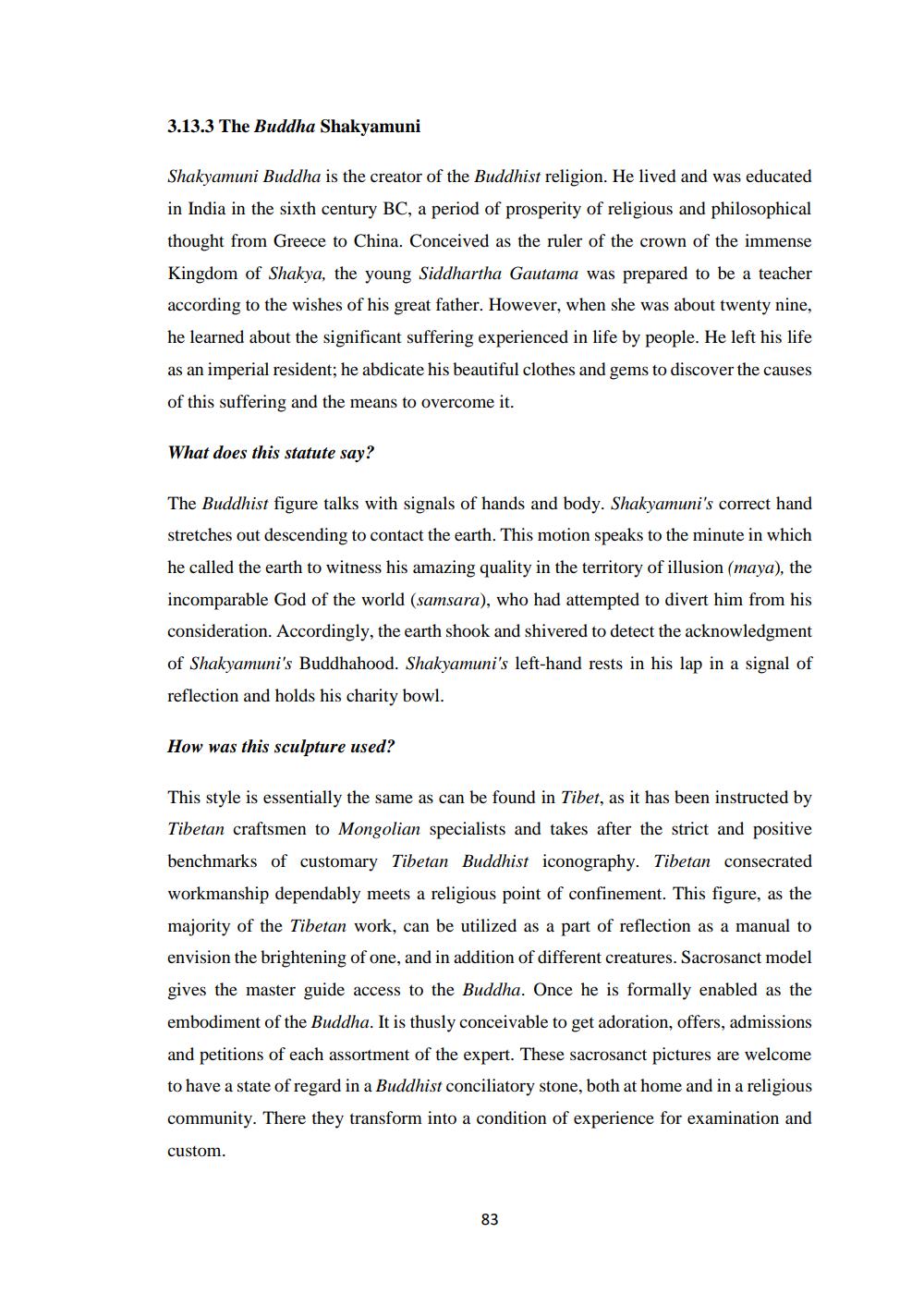________________
3.13.3 The Buddha Shakyamuni
Shakyamuni Buddha is the creator of the Buddhist religion. He lived and was educated in India in the sixth century BC, a period of prosperity of religious and philosophical thought from Greece to China. Conceived as the ruler of the crown of the immense Kingdom of Shakya, the young Siddhartha Gautama was prepared to be a teacher according to the wishes of his great father. However, when she was about twenty nine, he learned about the significant suffering experienced in life by people. He left his life as an imperial resident; he abdicate his beautiful clothes and gems to discover the causes of this suffering and the means to overcome it.
What does this statute say?
The Buddhist figure talks with signals of hands and body. Shakyamuni's correct hand stretches out descending to contact the earth. This motion speaks to the minute in which he called the earth to witness his amazing quality in the territory of illusion (maya), the incomparable God of the world (samsara), who had attempted to divert him from his consideration. Accordingly, the earth shook and shivered to detect the acknowledgment of Shakyamuni's Buddhahood. Shakyamuni's left-hand rests in his lap in a signal of reflection and holds his charity bowl.
How was this sculpture used?
This style is essentially the same as can be found in Tibet, as it has been instructed by Tibetan craftsmen to Mongolian specialists and takes after the strict and positive benchmarks of customary Tibetan Buddhist iconography. Tibetan consecrated workmanship dependably meets a religious point of confinement. This figure, as the majority of the Tibetan work, can be utilized as a part of reflection as a manual to envision the brightening of one, and in addition of different creatures. Sacrosanct model gives the master guide access to the Buddha. Once he is formally enabled as the embodiment of the Buddha. It is thusly conceivable to get adoration, offers, admissions and petitions of each assortment of the expert. These sacrosanct pictures are welcome to have a state of regard in a Buddhist conciliatory stone, both at home and in a religious community. There they transform into a condition of experience for examination and
custom.
83




